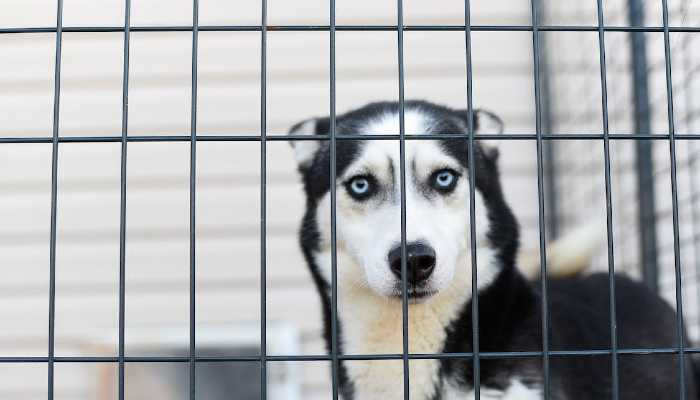Leash training your puppy is an important step in their overall training process. It allows them to explore the world safely while also teaching them to obey commands and follow your lead. A properly trained puppy will make your walks enjoyable and stress-free.
In this article, we will cover everything you need to know about leash training your puppy, including when to start, the different types of leashes and collars, and step-by-step instructions on how to train your puppy to walk on a leash.
When to Start Leash Training Your Puppy
The ideal time to start leash training your puppy is around 8-12 weeks old. At this age, your puppy is still very impressionable and is more open to learning new things. However, it’s important to note that your puppy should have already mastered basic obedience commands such as “sit,” “stay,” and “come” before starting leash training.
It’s also important to ensure that your puppy has had all their necessary vaccinations before taking them outside for walks. This will protect them from potential diseases and keep them healthy.
Types of Leashes and Collars
There are various types of leashes and collars available in the market, and choosing the right one for your puppy can be confusing. Here’s a breakdown of the most common types of leashes and collars.
Standard Leash: This is the most common type of leash and comes in different lengths, materials, and thickness. A standard leash is usually made of nylon, leather, or rope, and ranges from 4-8 feet in length.
Retractable Leash: This leash has a retractable cord that allows your puppy to roam around freely. Retractable leashes are great for puppies who like to explore but can be dangerous if not used correctly.
Harness: A harness is a type of collar that fits around your puppy’s body, providing better control and preventing choking. Harnesses come in different types, including front-clip, back-clip, and no-pull.
Martingale Collar: This type of collar is designed to prevent your puppy from slipping out of their collar. It has a limited-slip feature that tightens when your puppy pulls, preventing them from escaping.
Step-by-Step Guide to Leash Training Your Puppy
Now that you know the basics of leash training and the different types of leashes and collars, let’s dive into the step-by-step process of leash training your puppy.
Step 1: Introduce Your Puppy to the Collar and Leash
Before you start leash training your puppy, it’s important to get them comfortable with the collar and leash. Let your puppy sniff and investigate the collar and leash while giving them plenty of treats and praise. Gradually increase the amount of time your puppy wears the collar until they are comfortable wearing it all day.
Step 2: Practice Indoors
Start by attaching the leash to the collar and letting your puppy drag it around the house. This will help them get used to the sensation of the leash and the weight of it. Once your puppy is comfortable with the leash, start picking up the other end and walking around the house with them.
Step 3: Practice Outdoors
Once your puppy is comfortable with the leash indoors, it’s time to move outdoors. Start in a quiet and familiar environment such as your backyard or a nearby park. Let your puppy sniff and explore their surroundings while keeping the leash loose. Remember to reward them with treats and praise when they behave appropriately.
Step 4: Teach Commands
As you walk with your puppy, start teaching them basic commands such as “heel,” “sit,” and “come.” Use treats and praise to encourage your puppy to obey the commands.
Step 5: Deal with Pulling
If your puppy starts pulling on the leash, stop walking and wait for them to come back to your side. When they do, reward them with treats and praise. Repeat this process every time your puppy pulls on the leash until they learn that pulling does not get them what they want.
Step 6: Increase Distractions
Once your puppy is comfortable walking on a leash in a quiet environment, start increasing the level of distractions. Take them for walks in busier areas, such as the neighbourhood or a park, and practice obedience commands in these environments. Remember to reward your puppy for good behaviour.
Step 7: Use Different Leashes and Collars
As your puppy becomes more comfortable with leash training, start experimenting with different types of leashes and collars. For example, try using a harness instead of a collar, or a retractable leash instead of a standard leash. See which type of leash and collar works best for your puppy.
Step 8: Practice Consistently
Consistency is key when it comes to leash training your puppy. Practice leash training every day, even if it’s just for a short amount of time. The more consistent you are with training, the faster your puppy will learn.
Tips for Successful Leash Training
Here are some additional tips to ensure successful leash training for your puppy:
Keep Training Sessions Short: Puppies have short attention spans, so keep training sessions short and sweet. Aim for 10-15 minutes at a time.
Use Positive Reinforcement: Always use positive reinforcement such as treats and praise to encourage good behaviour.
Be Patient: Leash training takes time and patience, so don’t get discouraged if your puppy doesn’t learn right away.
Stay Calm: If your puppy becomes scared or anxious while on a walk, stay calm and reassure them that everything is okay.
Be Consistent: Consistency is key when it comes to leash training, so make sure to practice regularly.
Final Thoughts
Leash training your puppy is an important step in their overall training process. With patience, consistency, and positive reinforcement, you can teach your puppy to walk on a leash like a pro. Remember to start early, choose the right type of leash and collar, and practice regularly. With time, your puppy will become a well-behaved and obedient walking companion.



